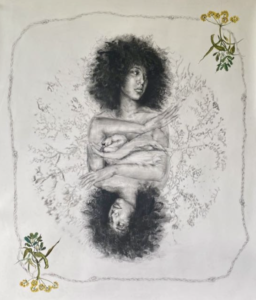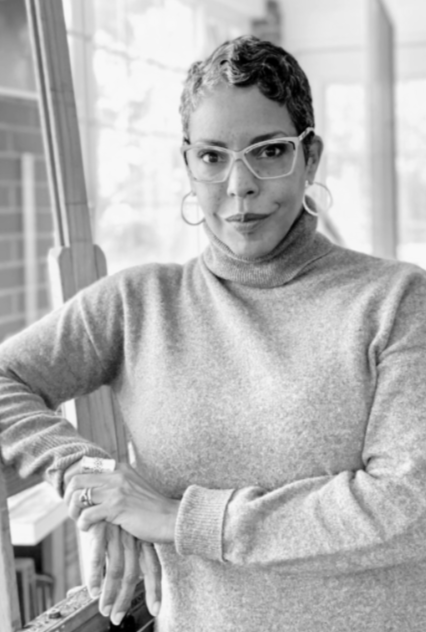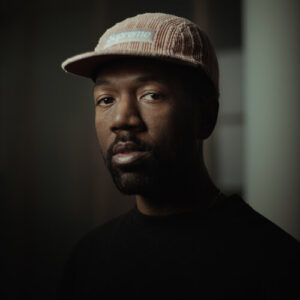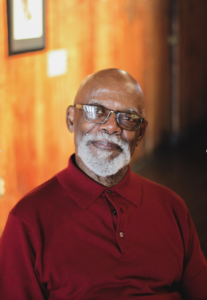Kyrin Hobson is a visual artist and independent arts professional dedicated to creating understanding and opportunity among diverse cultures. Her distinctive approach to art making and her commitment to building connections for institutions, audiences and artists define a multifaceted career. Studio work and research interests engage Hobson’s role as a cultural signifier and pragmatic change agent. Hobson’s artistic practice includes narrative figurative painting, portraiture, drawing and mixed-media installations. Multi-layered works fuse autobiography with myth and care giving traditions of New Orleans, Haiti and the Black Diaspora. Finding Guinen is a current body of work that interrogates the racial imaginary with regard to the wholeness and histories of women of African ancestry in the Americas.
Hobson is a 2023 MFA candidate at University of Chicago, in addition she holds a Master of Arts degree in Arts Administration and Museum Studies from New York University and a Bachelor of Arts in Studio Art from UCLA.
Kyrin is also organizer and curator of The Balm: Art for Black Women’s Wellness on view at SSCAC October 8th – December 23rd.
https://www.kyrinhobson.com/bio.html

Fecundity Trick Card. Mixed media on oil paper, 44 x 51”. 2021.






